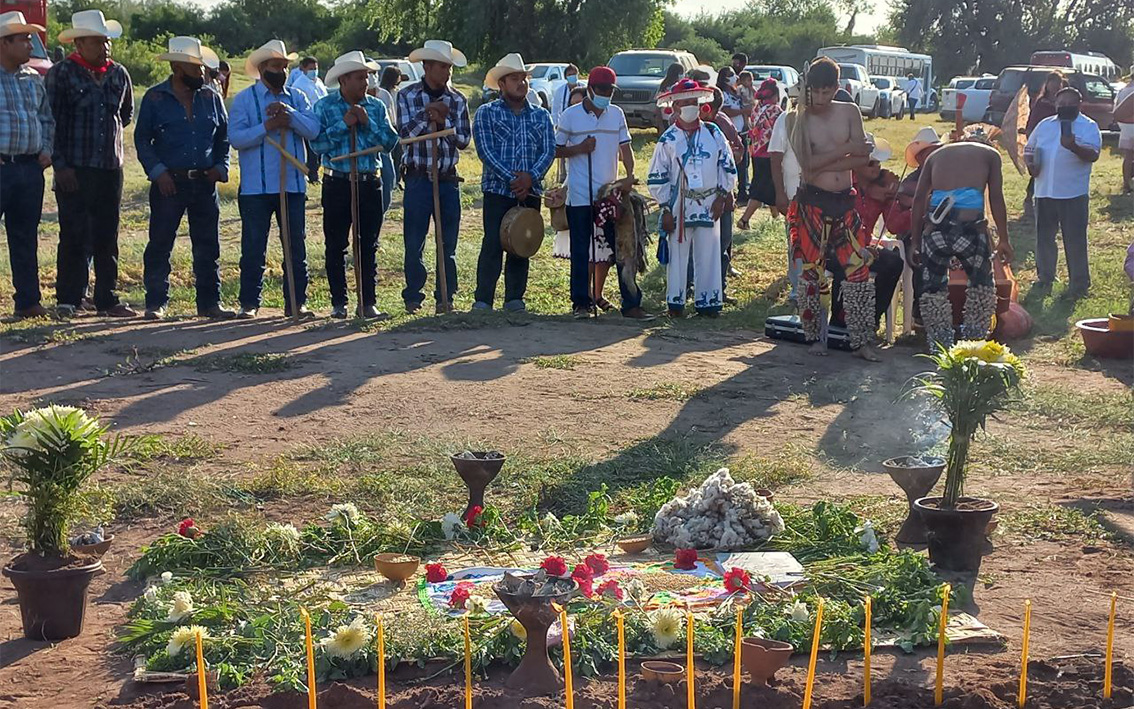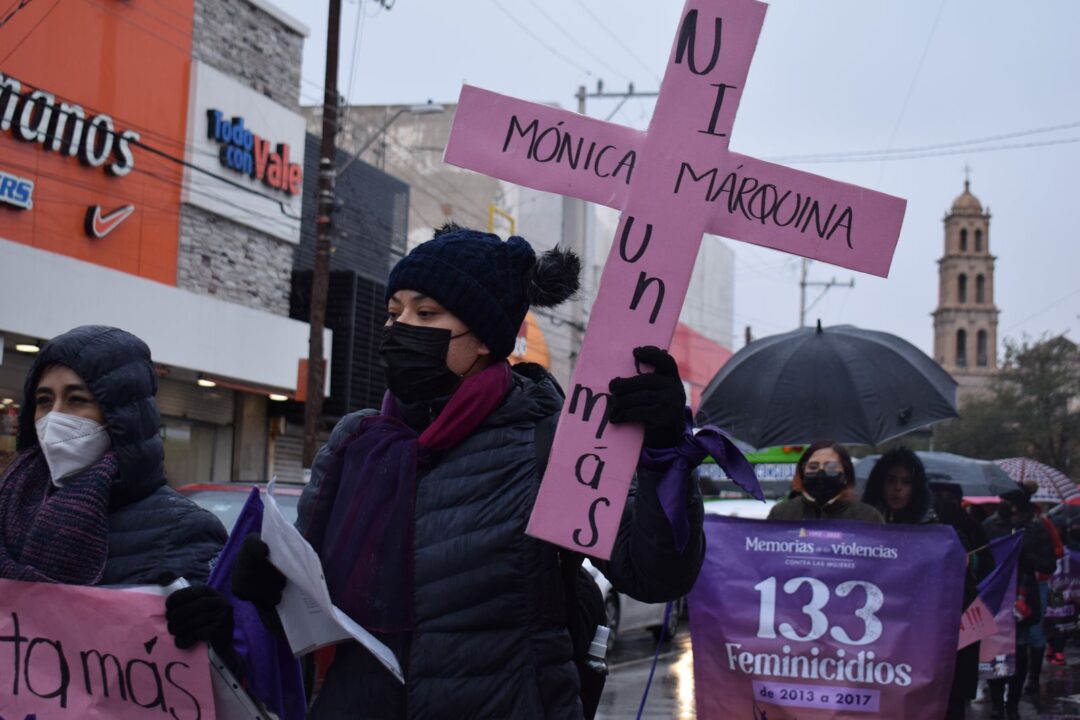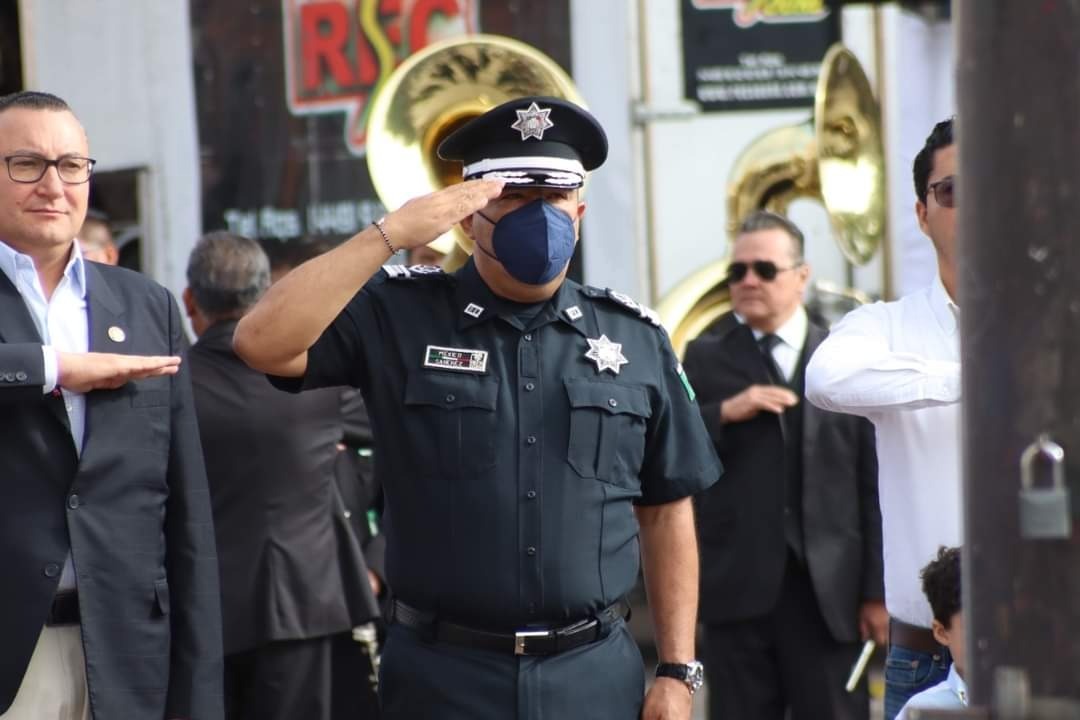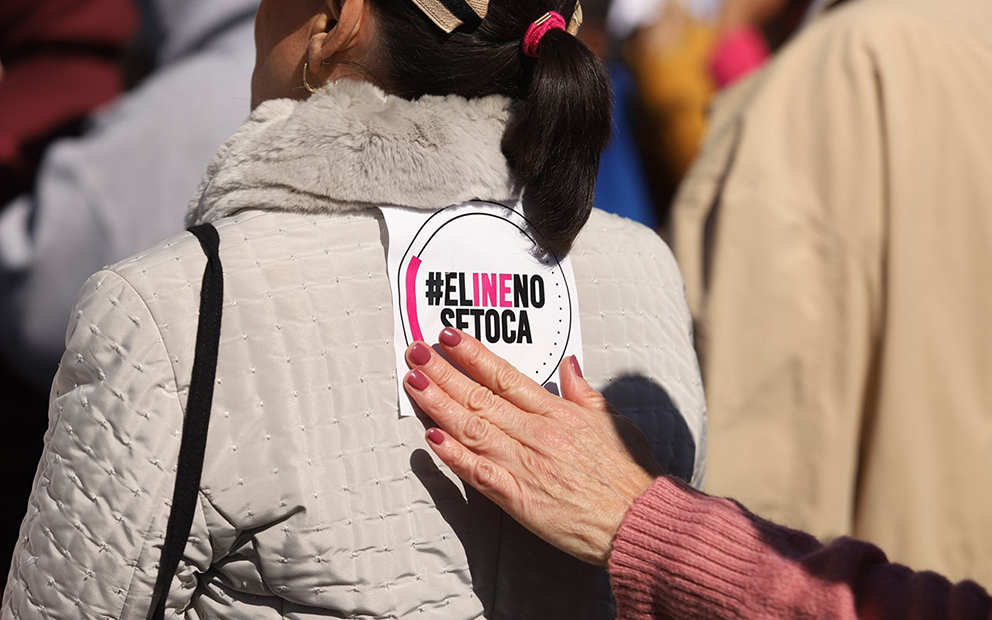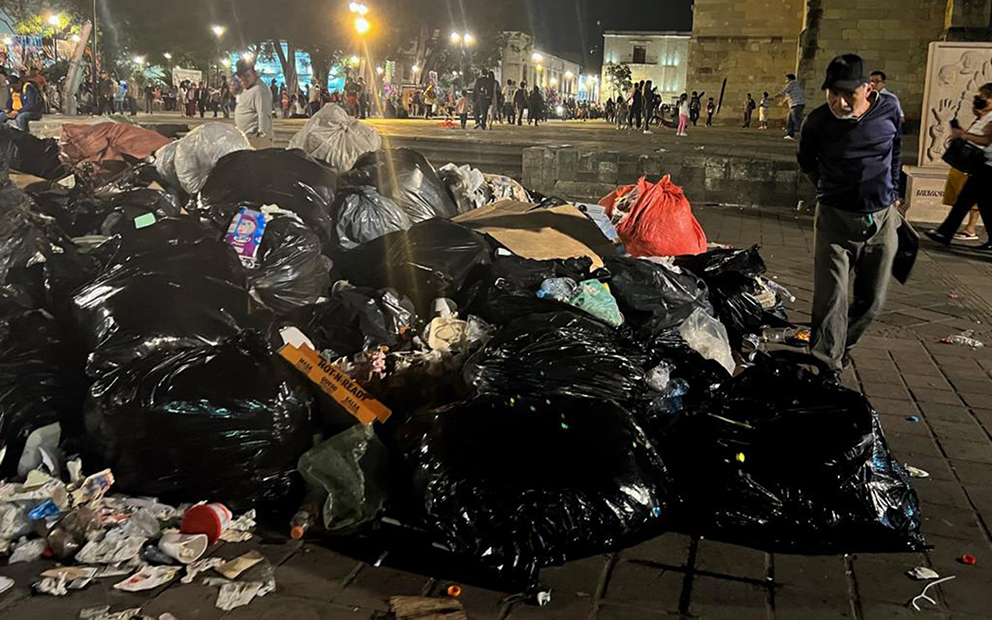The Mexican Army once massed in the town of Tórim to exterminate the Yaqui people, whose territory spans northwest Mexico. But the attempt at genocide failed. Amid the ruins of military barracks, Laura Hernández Urzúa, a teacher, tells of her people’s epic fight to survive, and speaks about the challenges of the government’s Justice Plan, led by president Andrés Manuel López Obrador.
Text by José Ignacio De Alba, originally published October 9, 2021.
Photos by Daniela Pastrana.
Translated by Elysse DaVega for Pie de Página in English.
CAJEME, SONORA– To fully understand the history of offenses against the Yaqui, you must visit an abandoned train stop locally known as Lencho Station.
The old train station is located between Ciudad Obregón and Guaymas, just outside the Yaqui town of Tórim, in Sonora state. The building is no more than 12 meters long, dilapidated and in the middle of the desert. It has no roof, and plants sprout out around the structure, adding to a somber atmosphere.
Yaqui people were imprisoned here, on the ground floor, before being sent into exile. This occurred during Porfirio Díaz’s dictatorship, known as the Porfiriato. Díaz revived the slave trade that had been abolished upon Mexico’s independence, and for two decades thereafter, thousands of Yaqui women, children and men were sent into submission to southern Mexico. The intention wasn’t solely to steal Indigenous land in northern Mexico, but to also take advantage of the Yaquis’ physical strength. The Yaqui were enslaved on the henequen-producing haciendas of the Yucatán and in the tobacco plantations of Oaxaca’s Valle Nacional.
Slavery under Porfirio Diaz
In the Museum of Memory and Tolerance in Mexico City, there’s a train car that was used by Nazis to bring Jews to concentration camps. Visitors can even step inside the cramped car. Would we as Mexicans be able to admit and reflect on our history in such a way? To admit that our nation as a project was built on a history of subjugation, such as that of the Yaqui? Or is it better not to admit the horror?
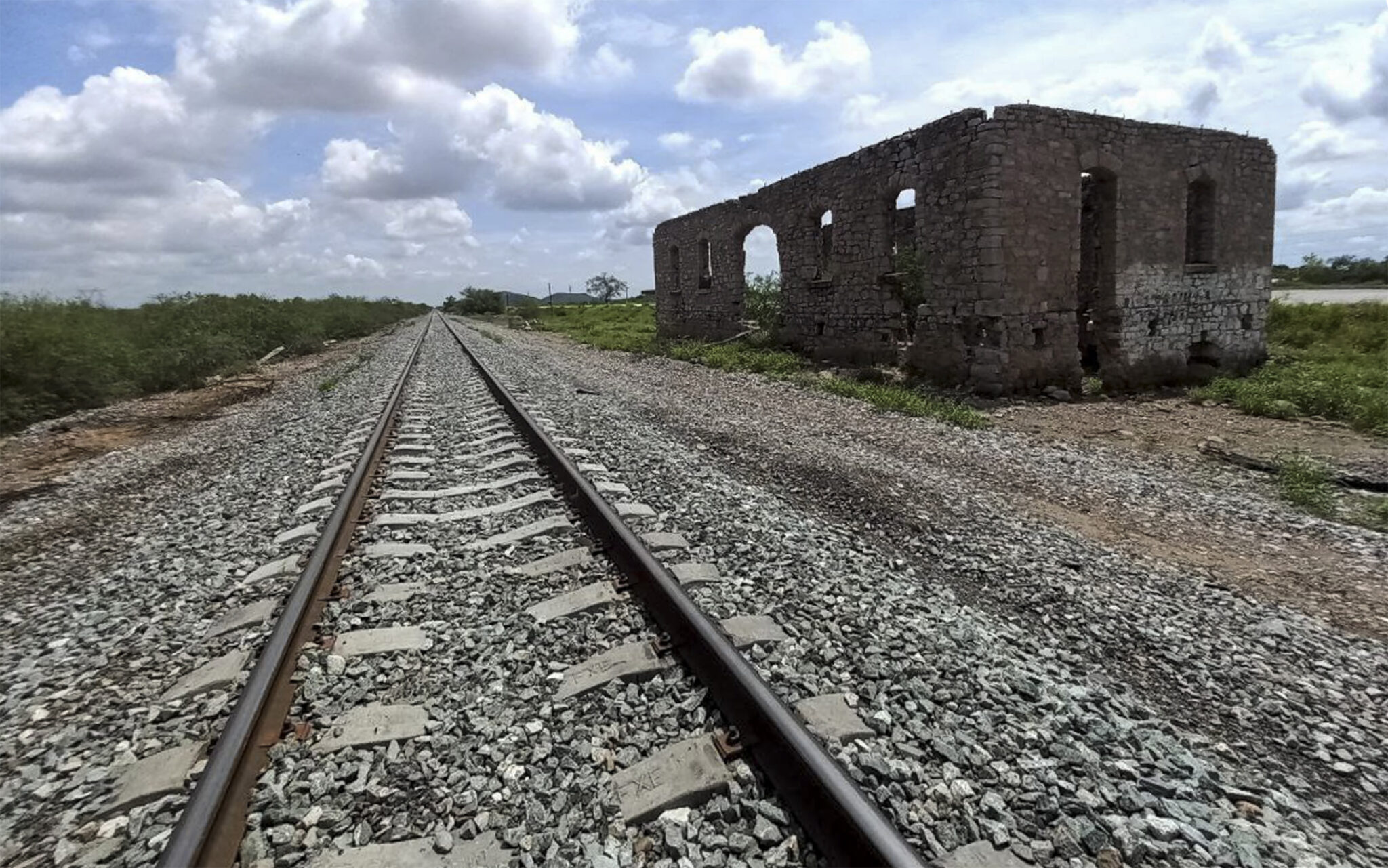
It’s a story that’s over one hundred years old, and little known outside of Yaqui territory. Unbelievably, this history has been covered up in official Mexican history. Some of the events were reported by John Kenneth Turner, a journalist who went undercover as a US investor to document slavery in Mexico during the Porfiriato. The author of Barbarous Mexico summarized the working conditions forced on the Yaqui such: “they die faster than they are born.”
Turner visited Valle Nacional, where he witnessed several Indigenous women being used to mill corn. The journalist asked the local mayor why the owners wouldn’t buy mechanical mills, to which he responded: “women are cheaper than machines.” Slaves usually died after eight months there, Turner wrote.
In fact, there is no clear record of the number of Yaqui who were slaughtered during the Porfiriato. It has been estimated that there were more than 10,000 killed, 60 percent of the Yaqui population at that time. It has also been said that only 600 survived. However, these strong-willed people survived. Over time, the Yaqui returned and reclaimed part of the territory that was stolen from them. Tórim, the town where the Army once massed, was repopulated. The Yaqui nation now has more than 40,000 members throughout eight communities: Vicam, Potam, Torim, Cocorit-Lomas de Guamuchi, Loma de Bácum, Huirivis, Ráhum and Belén.
Laura Hernández Urzúa is an Indigenous elementary school teacher, but she’s also taken it upon herself to gather information on her people’s history and pass it on to other tribal members. She’s certain that the war on the Yaqui isn’t finished, and that their resources are still coveted by yori, that is, non-Yaqui people.
“Who?”
“Well, most of all, the growers from the Valle del Yaqui. The businesses from Cajeme, the economic sector of Cajeme.”
“They don’t see Indigenous people as people”
The Yaqui were able to return to their land after the Revolution, when the Lázaro Cárdenas’ administration gave back a portion of their previously stolen territory. It was also agreed that, when a dam was built, they would receive half of the water from the Yaqui River. Even though Cárdenas viewed this as an act of justice, to the Indigenous, it meant the «legalization of plunder,” the teacher says.
The Valle del Yaqui is currently in the hands of some of Sonora’s richest men and companies, known locally as the “titans of the agro-industry.” This fertile valley is one of the most productive regions in Mexico, it was also a testing ground for the Green Revolution. The land is fertilized with small planes, and the fields are irrigated with sophisticated canals.
Today, many Yaqui people aspire to work as low-wage laborers on the land that was stolen from them. According to government data, the Yaqui people suffer extreme marginalization. Not one of the Yaqui nation’s communities has access to clean drinking water. Lazaro Cardenas’ promise to give back the waters of the Yaqui River is still unfulfilled: the natives were banished to the desert.
“How long has there been no water?”
“As far back as I can remember, the river has flowed on very few occasions. The dams release water when they become too full, but there’s been no water here for years. My kids have barely gotten to see it, they didn’t even learn to swim,” the teacher responds.
“What started this cruelty against the Yaqui people?”
Ambition, land, and water. The group in power only wants money, always. They don’t care about taking out the people, the land, the ecosystem as a whole. I think we all know it, that they don’t care about destroying the entire ecosystem to install mines, open crop fields, all of that. Ambition. [It’s also because] they don’t see Indigenous people as people.
500 years of battle
First, The Yaqui were categorized as «savages» and wars were fought against them in colonial times, but the worst attacks they suffered took place during the Porfiriato. Sonora’s 1873 constitution even annulled their Mexican citizenship «so long as they maintain an irregular organization.» Then-governor of Sonora Ignacio Pesqueira offered the public a hundred pesos for each Yaqui scalp brought to the government. It was open season.
The Indigenous people fought back through a war of resistance that lasted hundreds of years. The Yaqui took refuge in the Bacatete mountain range, which stretches across the Sonora desert like a backbone. Confrontation with the military was organized under guerrilla warfare techniques, the Yaqui avoided the front and instead carried out sporadic attacks before retreating to mountainous areas. The battles were fought in difficult weather: the temperature in Yaqui territory can reach up to 50 degrees Celsius (122 degrees Fahrenheit). In addition to this, the Indigenous people fought with few arms, but did use bows and arrows with the tips covered with the venom of snakes, scorpions, and Gila monsters (a kind of venomous lizard native to Sonora.)
The Yaqui have been fighting for the last 500 years. They are known as ferocious people, but Laura says this isn’t true.
«A Yaqui doesn’t take what isn’t theirs, but they do defend what is theirs, till death if need be,» she said.
Even today the Yaqui maintain a military organization. For example, during a visit to the town of Vícam, the cavalry commander offers to give tours. Although he doesn’t have a horse, he still commands the town’s troops.
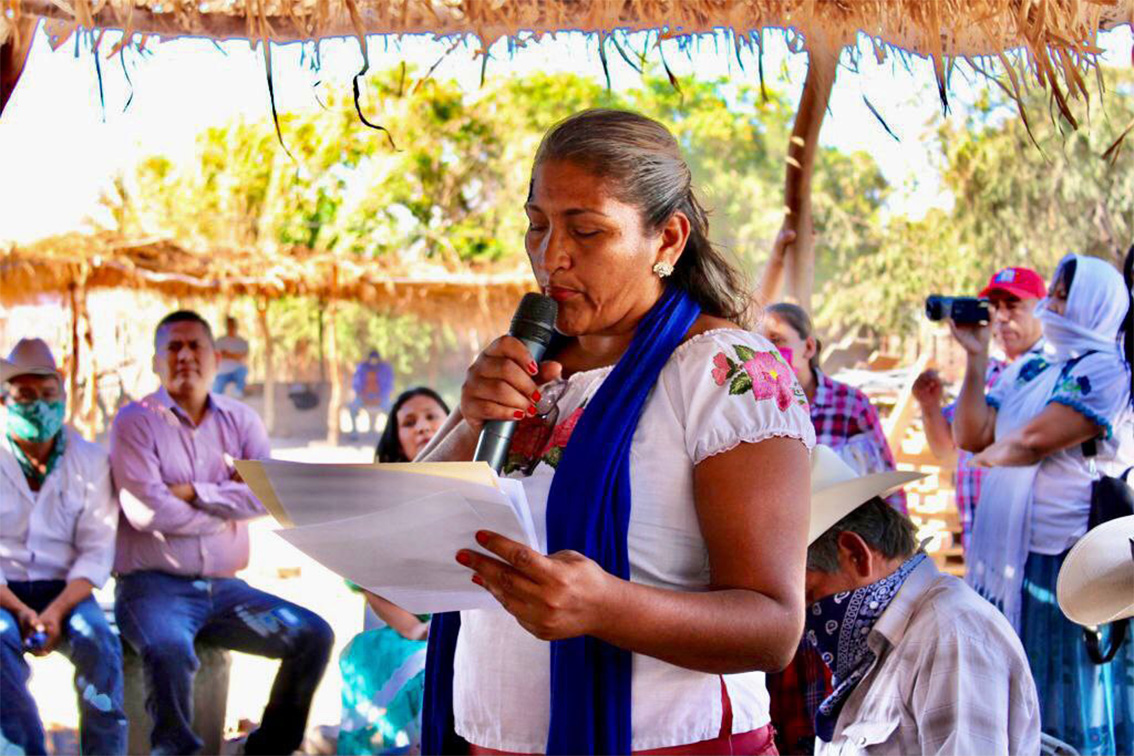
The commitment to take care of the land
Defense of their identity and territory is inscribed in the deepest part of the Yaqui’s founding history. Laura narrates the story they’ve long been told: long ago, there was a prophetic tree that announced the arrival of people from the other side of the sea (predicting the arrival of the Spanish). It also said that people of other religions were coming, and that they came to baptize people under the name of another god.
The tree also explained two ways to prepare for the strangers’ arrival: to flee, or to defend the land. A lot of Yaquis abandoned the area, the rest decided to stay. Those who left were transformed into animals. «Those who stayed stayed to face those who were coming.»
This knowledge has been passed down throughout history. «This is why we’re committed to taking care of the land, we’re all part of it, and we all are one: siblings. The water, the stones, the animals,» the teacher explained.
Since ancient times, Yaqui governors have administered a loyalty oath to new officials in the nation. The powerful oath goes:
«For you, there will be no more sun
For you there will be no more night
For you there will be no more death
For you there will be no more pain
For you there will be no more heat
Nor thirst, hunger or rain,
Nor air, nor sickness, nor family…
Nothing will frighten you
All will have ended for you
Except one thing: the fulfillment of the duty
In the position that has been designated to you.
There you will remain for the defense of your nation
Of your people, of your race, of your customs.
Do you swear to fulfill the divine commandment?”
According to teacher Laura, «not only adult men become yoreme troops (traditional knowledge keepers); we are young and old, men and women. We all have to be ready, in case we need to act.»
New battles
In recent years, a new warfront has opened for the Yaqui: drugs and organized crime have begun to consume young people in their communities. For Laura, however, these new threats have very old roots:
“It’s another kind of war. But –this might sound bad, but– these problems intensified when megaprojects started, like the gas pipeline and the aqueduct.”
In 2010, the Sonoran government under Guillermo Padrés planned the construction of the Independence Aqueduct to bring water to the city of Hermosillo. Even though the project would take away the little water that the Yaquis had been left with, it was done without consulting the Yaquis. A lawsuit against the project brought on a wave of criminalization and led to the imprisonment of several Yaqui leaders. In 2013, Mexico’s Supreme Court of Justice ruled in favor of the Indigenous group. Regardless, the project is still operational.
Additionally, during Enrique Peña Nieto’s term, Ienova, a Canadian business, planned the construction of a gas pipeline that would snake through the middle of the town of Loma de Bácum. In 2016, the company, headed by Carlos Ruiz Sacristán, who was the Secretary of Communication and Transportation during Ernesto Zedillo’s presidency, created a fracture between Yaqui communities that was encouraged by the government of Sonora. It’s still an open wound.
Although the gas pipeline project has come to a halt and the current government has assured that the plan will be altered, the teacher thinks that the reactivation of the projects is a latent danger.
Since then, dozens of Yaqui have been killed related to drug trafficking, drug use, and political persecution. In July of this year, 10 members of the nation were forcibly disappeared in Loma de Bácum; in September, authorities reported that they had identified five of the disappeared mens’ bodies.
Impossible forgiveness
The genocide against the Yaqui partially accomplished its objectives: to seize land and the water from the Yaqui River. The Yaquis are now confined to a small fragment of their territory. Over the last year, the government of Andrés Manuel López Obrador (AMLO) has put together a Justice Plan with the Yaqui people that seeks to return their rights.
The plan, signed on September 28th of this year, intends to return their stolen land, their water, and their right to exist as a people, with their own culture and form of organization. During a ceremony the same day, for the first time in history, the Mexican government recognized the offenses committed against the Yaqui people.
«We want to ask forgiveness for the state-backed crimes that were committed against your ancestors, especially during the Porfiriato,» said the president as he stood before members of the Yaqui nation.
“What does the word ‘justice’ mean?” we asked Laura just a few days before the president’s arrival.
“Regarding what’s happening now, I don’t think that the damages can be reversed. That’s impossible. They tried to exterminate an entire people, and a lot of people died: grandfathers, grandmothers, children. What they suffered can not be undone.”
Then she explained:
Forgiveness is hard. The president can say it, but he wasn’t the one who did it in the first place. He’s asking for forgiveness on behalf of other people, but those people, in that time, that did what they did, are not forgiven… Porfirio Díaz is not forgiven, and others in power at that time aren’t either.
***
The orchestrators of the Yaqui genocide are well-known, but their names are not synonymous with evil. Instead, they are renowned figures of official Mexican history. Even today, streets and neighborhoods around the country bear their names: Porfirio Díaz, Félix Díaz, Ramón Corral, Rafael Izábal, Carlos Conant, Francisco Bulnes, Jesús Alfonso Cadena, and Ignacio Pesqueira, whose statue is on Paseo de la Reforma, one of Mexico City’s most important streets.
Daniela Pastrana wanted to be an explorer and see the world, but instead she became a journalist and decided to try and understand human societies. For six years she ran the Red de Periodistas de a Pie. She founded Pie de Página, a digital outlet that seeks to change the narrative of terror that is installed in the Mexican media. She always has more questions than answers.
José Ignacio de Alba was educated in Catholic schools until he became an atheist. He is a shy wanderer, and never finished his journalism degree. He tends to have more faith the old narratives than the new, and he likes to write stories.
Click here to join Pie de Página’s bi-weekly English newsletter.
Ayúdanos a sostener un periodismo ético y responsable, que sirva para construir mejores sociedades. Patrocina una historia y forma parte de nuestra comunidad.
Dona

